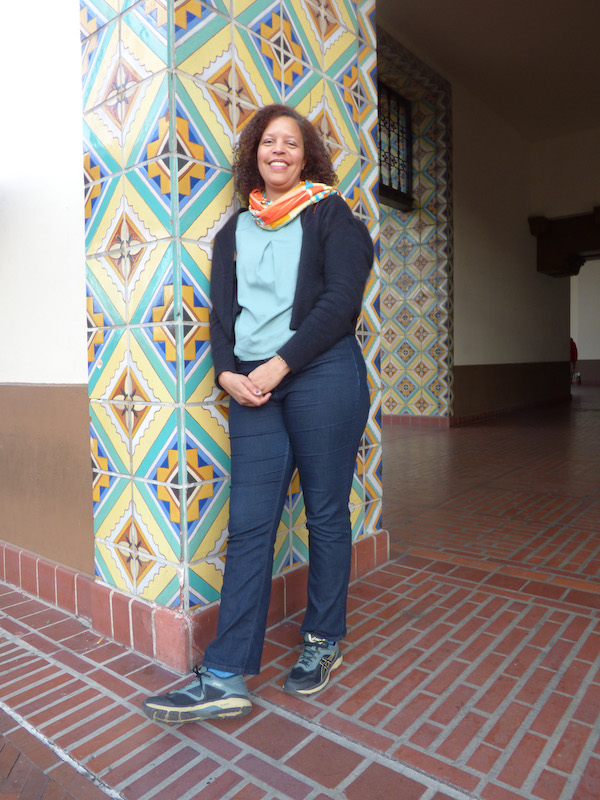Isabelle Lutterodt is the director of the Los Angeles Municipal Art Gallery.
O’BRIEN: I know you started your activities as an artist but are now involved in administration and curation as the director of the Barnsdall Municipal Art Gallery. How did your life take this direction?
LUTTERODT: After I finished my studies at CalArts in 2001, I curated the “Ghetto Fabulous” exhibition with Karin Pleasant that was shown at the Watts Towers Arts Center and The Armory in Pasadena. That started me on a trajectory of doing independently curated exhibitions in LA. I went back to school and got a masters degree in museum studies, then worked my way up from the usual starting positions. I was the exhibition coordinator at UCSD for a few years but—then fast-forwarding—what really catalyzed my interest in this practice was an exhibition that I curated at CAAM (the California African American Museum) titled “Through the Gates: Brown vs. Board of Education.” There I could really see how community and arts could come together and delve into a particular idea, a particular concept, a particular way of working.
Do you fundamentally view the kind of work you’re doing now as an extension of your art practice?
I definitely felt that way when I was working at Angels Gate Cultural Center in San Pedro. The idea was to create a level playing field where artists of different extractions could be working side-by-side and be seen in a single show. Now it has morphed into something else where I’m not really curating or making art but bringing these things into a broader field. I’m directing a larger staff where we’re responding to what it means to live in a community like Los Angeles. It means that we have to look at all the different stories. I believe that we are really curious about how we tell these multiple stories while being open to experimentation.
You come from multiple cultures—being born in England, then brought up in Ghana, then coming through the East Coast when you were a child, then after Howard University (DC) to Los Angeles. How does that influence the way that you work and how you understand culture making?
I know that my experience is shaped by being an immigrant. LA is a city of immigrants with numerous people who, other than their country of origin, have the largest populations right here. I grew up with the certain binary understanding of what happens in your home, growing up in a Ghanaian culture with certain things that are important there but not elsewhere. It shapes how you understand things. It led me to understand that everyone has a different story and wants these different stories to be heard.
When you think about your next and upcoming goals, is there something specific that you’d like to accomplish?
Yes I’d really like to work on projects that have something to do with formerly incarcerated youth, and figure out a way in which the city can be a place they can feel like they’re a part of. I don’t know how to do it yet but I’d like to imagine creating a way in which formerly incarcerated youth can have a face in public. Especially when I think about galleries like Barnsdall, I ask how can we position ourselves as a place of equity and justice, and what does that look like? There’s a lot of talk in the museum world about social justice and change. What would that look like and how can we bring that in?


